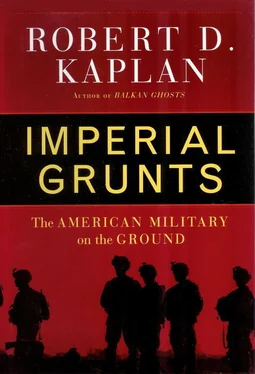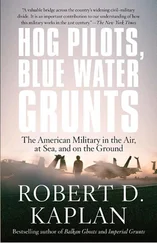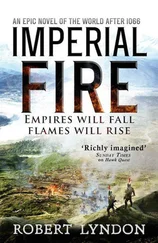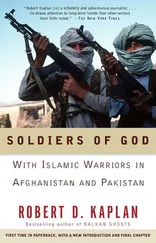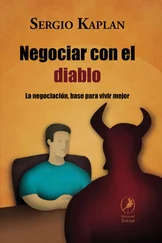———
Because Colombian society was sick, so was its military. While U.S. Army Special Forces couldn’t reform the whole Colombian army, it could improve some of the host country’s elite units, which could then project power into the FARC-controlled badlands. The training of foreign armies provided the Green Berets’ basic function. [15] Douglas Porch, professor of strategy at the Naval War College, in his 1996 introduction to Col. C. E. Callwell’s Small Wars: Their Principles and Practice (1896; reprint, Lincoln: University of Nebraska Press), notes that a key feature of imperialism is the use of host country or “client” armies in place of one’s own.
And they didn’t just train the commandos from foreign armies; they trained the trainers themselves—the foreign lieutenants and sergeants who, in turn, would pass on Special Forces techniques to their own subordinates.
To see the training up close, I had to travel about the country to various bases. Thus, Lt. Col. Duke Christie and I left Bogotá one afternoon in an armored pickup truck. Duke carried his M-4 assault rifle and 9mm Beretta pistol. The precautions seemed absurd. The journey from Bogotá southwest to Tolemaida took only two hours over a well-traveled route that was generally safe from roadblocks and kidnappings (few other routes in the country could claim that distinction). It was partly a “force protection” issue. For a journalist to be kidnapped or harmed in another way while under the protection of the Special Forces would have been a public embarrassment. But as I would increasingly discover in the course of my travels, force protection was a debilitating obsession with the U.S. military.
Bogotá, at 8,560 feet, is one of the coolest spots in Colombia. Yet it wasn’t long before our car was careening down a choppy sea of ragged, bluish green slopes, smothered in vines and strewn with cedars, tamarinds, and bananas, with evergreens gradually giving way to palms and bougainvillea. The bosky realm was suggestive of the coastal forests of Portugal, another climatic fault zone, except that this landscape was wilder and more chaotic. After the refreshing clarity of the higher altitudes, the air now had the somber closeness of a fish tank.
As it got dark, we turned into Colombia’s National Training Center at
Tolemaida. For the Colombian military, Tolemaida combined the functions of Fort Bragg, with its Army Special Forces; Fort Rucker, Alabama, with its aviation units; and Fort Benning, Georgia, with its Officer Candidate School, noncommissioned officer school, mechanized infantry school, and school for Army Rangers (which in Colombia were called Lanceros). Decades of democracy notwithstanding, the military was still the most respected institution in Colombia, more so than the Catholic Church, according to polls. Tolemaida was a manifestation of that fact. The level of maintenance was high: trimmed lawns, whitewashed sidewalks, speed bumps, nice supermarkets, and playgrounds for the children of Colombian military families.
Just as the Indian and Pakistani armies copied the dress and mannerisms of the British, Colombian army uniforms were modeled after American ones, with Colombia’s special forces wearing the same green berets and red flashes as U.S. elite units. The lone, original sartorial touch was the black kerchiefs that Colombian soldiers wore around their necks in South American cowboy style.
The assault rifles—the workhorse of late-twentieth-century armies—were also different. Rather than the American M-16 or its variations (such as Duke Christie’s M-4), the Colombians packed Israeli-manufactured Galils. The Galil was modeled after the Soviet Kalashnikov, yet it was compatible with the American 5.56mm bullet, instead of the Russian 7.62mm. The Israelis had developed the Galil in order to benefit from the Soviet rifle’s firing dependability and convenient folding-stock design, while still relying on American ammunition.
After driving at high speed for another quarter hour through the sprawling Tolemaida base, we pulled up at an isolated barracks, the temporary home of ODA-781, a U.S. Army Special Forces A-team.
Opening the steel door of the air-conditioned armored pickup, I gasped from the humid, knee-buckling heat of Colombia’s equatorial lowlands. Capt. Chris Murray, ODA-781’s commander, was there to greet us. Capt. Murray had a velvety voice and smile that mothers everywhere fall in love with, even as his uniform hid a muscle mass straight out of a bodybuilding magazine. Chris Murray, thirty-five, was an African-American who had joined the Army after graduating from high school in Rockaway Beach, a working-class area of Queens, where I, too, had grown up. Murray was a commissioned officer thanks to attending Officer Candidate School at Fort Benning.
Murray led me inside to my quarters, a corner bunk at the end of a long, corrugated iron shed where the heat was relieved here and there by loud whining fans. Duke smiled, as happy as I would ever see him. “The barracks,” he exclaimed, “the last remaining thoroughly unrepentant masculine environment in the Western world!”
Militaries are the ultimate reflections of national cultural achievement, or the lack thereof. Here was America’s brawn, organizational know-how, and technological advancement, condensed as though in a museum case on foreign soil. Atop bunks and storage bins, on long foldout tables, and on metal shelves under fluorescent lights, I saw piles of black boots, Listerine, shaving cream, and pictures of loved ones alongside ammunition cases, bandoleers, speed loaders for jamming ammo, and magazines for 9mm and 5.56mm bullets. There were boxing gloves, a trapeze-like arrangement of mosquito nets, torches, briefing books, and laptops. CDs and floppy disks lay alongside blasting caps, communications gear, night vision goggles, signal flares, chem-bio masks, M-3 medical kits, flak vests, machetes, M-203 grenade launchers, 60mm and 80mm mortars, and bipods for heavy guns. There were two black suitcases, each containing a water purification system. There were all sorts of web gear, MREs (meals ready to eat), and Peltors (earphones that filtered out gun sounds but not voices on the firing range).
There were stacks of Beretta pistols, first used by the Army during the invasion of Grenada in 1983, when the Beretta replaced the Colt .45, which had been in service since Gen. John “Black Jack” Pershing’s 1916 expedition into Mexico against Pancho Villa. The Beretta uses a smaller bullet than the Colt, but it has less recoil, carries more rounds, and as a last-ditch weapon is easier to handle. There were also the new modular integrated communications helmets, snugger fitting and lighter than the previous models, yet with a tighter Kevlar weave that provided better protection against bullets. Most importantly, there were the squad automatic weapons, which for Army Special Forces were M-249 “Minimis” from the Belgian design, and M-4s with collapsible stocks and shorter barrels for urban combat.
What made the M-4 an improvement over other assault rifles was its modular rail system, on which one could add several accessories—grenade launcher, shotgun barrel, optical site, and carrying handle—making for a truly custom-designed weapon. Unlike the rest of the Army, Special Forces abjured uniformity. Everybody’s rifle and web gear were slightly different. You packed what worked for you in the field, not what the regulations demanded. A few years back, someone had noticed that the Israelis manufactured a nifty collapsible litter for bearing the wounded. Special Forces officers started ordering them over the Internet; nobody waited for the Army to go through the procurement process. The litters were now known simply as “Israelis.”
Hanging from the ceiling in the middle of the barracks, between the two long lines of bunks, was a large American flag. Salsa music blasted from speakers as everyone peeled off their uniforms and headed for the showers. I realized I would be the only one without at least one tattoo on my body.
Читать дальше
